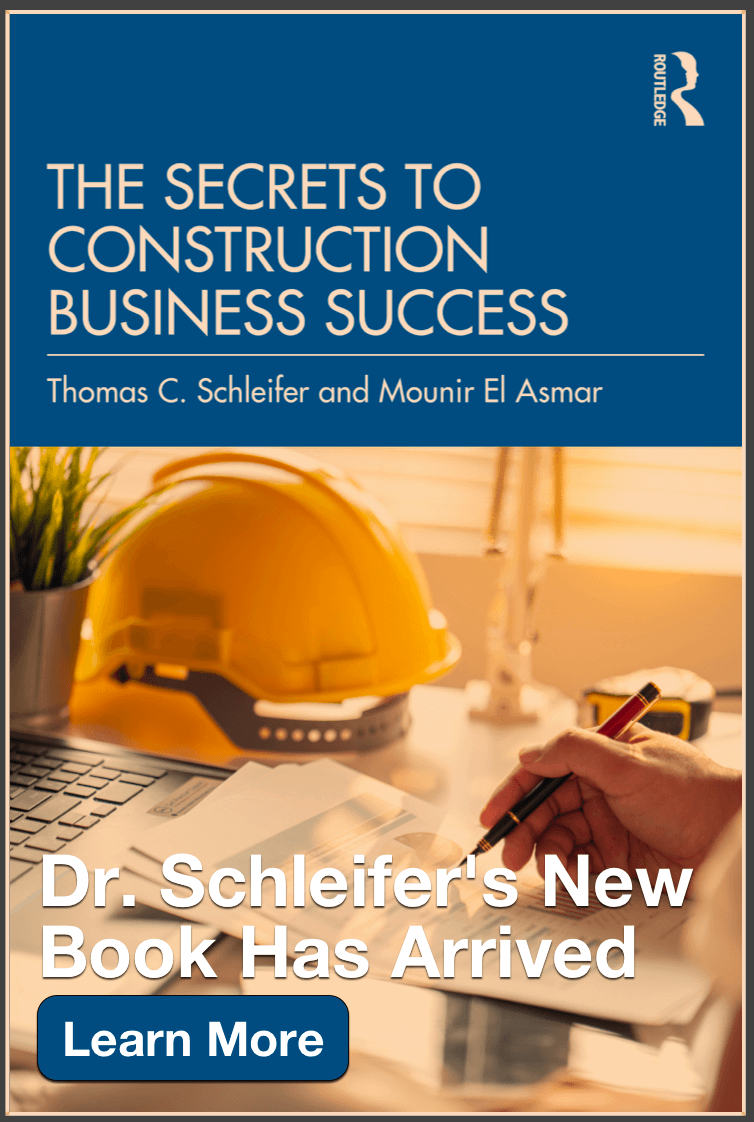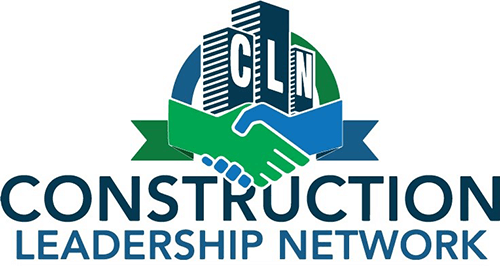Make Friends with Trends
Thomas C Schleifer, Ph.D.
We have been discussing managing construction companies profitably under post-pandemic disruptive market conditions. Studying what we labeled “disruptions” (run-away cost inflation, impending recession, supply chain interruptions, and a chronic shortage of skilled labor) we determined that some of these “disruptions” (like the shortage of skilled labor) are long-term industry trends that have been creeping up on us for years and that we have no control over.
Disruptions vs. Trends
- Disruptions are anomalies, incidental market conditions that recur in cycles (we had not experienced rampant cost inflation for thirty years e.g.). Most are able to craft management responses to minimize the negative impact of these cyclical disruptions and eventually resume business as usual.
- Trends, on the other hand, are quite different. They evolve gradually from the interplay of market forces beyond our control. We often don’t even see them coming. The market forces that engender trends are the stuff of geniuses like Adam Smith (supply and demand) and not generally of high interest to us busy construction professionals dealing with day-to-day problems.
- Just like watching our children grow with pencil marks on the door jamb, we only notice trends after they have already happened. In the case of our children, we are not sure how to react. We know we can’t do anything about it, so we begin to adapt to them becoming grownups. In other words, we alter our internal view of who they are. We change our beliefs about them.
- Adapting to trends engendered by market forces is a similar process. We must alter how we see the nature of our business and how we manage our firms for profitability and long-term success. We can’t change the evolution (trends) of the construction market. We can only change how we adapt. Adapting, in this example, means changing long-held beliefs we cherish about the nature of the construction business and how we manage our companies.
Trends (That Are Here to Stay)
The chronic shortage of skilled labor we are experiencing in not the only trend that is altering our industry. A careful inspection of other high-risk market factors reveals additional evolving trends that will change how we do business.
- Permanent change in the labor pool demographic. As we have discussed, the experienced and steady baby boomers have or are close to retiring and are only slowly being replaced by reluctant younger generations who would rather be in white-collar jobs. Unless the labor market self-corrects (and I don’t think it can), our industry’s capacity will shrink, and we must learn to adapt.
- Market consolidation (fewer companies doing a greater share of the work) has been a growing trend for decades that most of us have refused to acknowledge. With a hunger fed by expansion, larger more efficient construction companies have been entering wider markets and taking work away from small and mid-size local contractors. This trend has been evolving for more than 30 years but has been exacerbated by the pandemic, the industry-wide shortage of skilled labor and the resulting need for an increase in productivity.
- Technological tool innovation is sweeping over the construction industry with the increased use of drones, building information modeling, virtual reality, artificial intelligence, 3D printing, and wearables, just to name a few.
- Contract Procurement is gradually moving away from simple low-bid models to competitive negotiation based on qualifications, technical approach, and price generally referred to as “performance-based contracting”. Such as:
- Design, Build, Operate procurement establishes standards that the DBO team must meet throughout the life of the contract, construction cost being only one element of the procurement process. The lifecycle cost of the facility, including the cost of operations for an extended period, is part of the decision-making procurement process.
- The Federal Acquisitions Reform Act permits a two-phase process whereby a limited group of proposers is selected based on qualifications and their general approach to a project. Then detailed proposals from these shortlisted proposers are considered according to “best value,” not just lowest price. This allows the design-build delivery process to be procured with competitive negotiation, performance-based standards, and best-value selection criteria.
Adaptation
And so, it goes. These four trends are only the beginning of the current industry evolution we are experiencing. I trust that many of you are sensing subtle subcutaneous shifts in our market and are beginning to realize they are inevitable. We won’t be able to stop them so we must be able to adapt our way of doing things or perish in resistance. Next week we’ll discuss what adaptation rather than resistance to the four trends above might look like.
To receive the free Weekly Construction Messages, ask questions, or make comments contact me at research@simplarfoundation.org.
Please circulate this widely. It will benefit your associates. This research is continuous and includes new information weekly as it becomes available.


